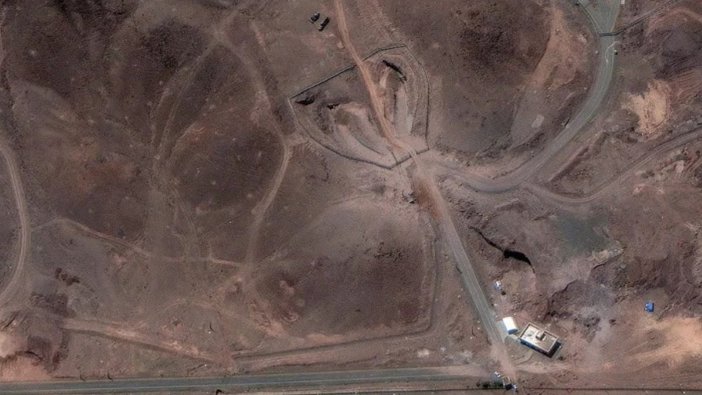
Pentagon: U.S. Strikes Set Back Iran’s Nuclear Program
Pentagon officials confirm that U.S. airstrikes last month have set back Iran’s nuclear program by up to two years, with key facilities reportedly destroyed and international observers closely monitoring Tehran’s response.
U.S. Airstrikes Deliver Major Blow to Iran’s Nuclear Facilities
The Pentagon announced Wednesday that U.S. “bunker busting” airstrikes against Iranian nuclear sites have inflicted severe damage on Tehran’s atomic program, setting progress back by one to two years. Defense Department spokesman Sean Parnell told reporters, “We have degraded their program by one to two years, at least intel assessments inside the Department assess that.”
Parnell emphasized the extent of the impact, stating, “We believe that Iran's nuclear capability has been severely degraded, perhaps even their ambition to build a bomb.” The strikes, carried out on June 22, specifically targeted major nuclear sites at Fordo, Isfahan, and Natanz—locations critical to Iran’s uranium enrichment and atomic infrastructure.
The official Pentagon assessment represents a notably more optimistic view of the operation’s effectiveness than earlier public estimates. Prior to this, international officials expressed uncertainty about whether Tehran’s nuclear ambitions would truly be halted, even in the face of significant material damage.
Disputes and Uncertainty Over Iran’s Capabilities
Despite the Pentagon’s confident assessment, international agencies have expressed caution. Rafael Grossi, head of the U.N.’s International Atomic Energy Agency (IAEA), warned over the weekend that Iran might be able to resume uranium enrichment within months. Grossi’s comments came as reports surfaced that Iran could have moved some of its near-weapons-grade uranium or advanced centrifuges out of targeted facilities, based on satellite imagery of cargo activity at the Fordow site before the attacks.
The U.S. government, however, has strongly denied these suggestions. Secretary of Defense Pete Hegseth expressed frustration with questions about whether Iran successfully transferred nuclear assets, maintaining there is no intelligence to support such claims. “All of the intelligence that we've seen has led us to believe that Iran’s—those facilities especially, have been completely obliterated,” Parnell asserted on Wednesday.
On the Iranian side, Foreign Minister Abbas Aragchi admitted that the Fordow facility suffered severe damage, but claimed that Iran’s technical expertise remains intact. “No one exactly knows what has transpired in Fordow. That being said, what we know so far is that the facilities have been seriously and heavily damaged,” Aragchi said during a recent interview.
The Pentagon’s position is that the strikes have delivered a strategic setback to Iran’s nuclear ambitions, with ongoing intelligence assessments reinforcing the belief that core capabilities have been disrupted.
As the international community continues to monitor the aftermath, questions remain about how quickly Iran might recover its nuclear capacity and whether diplomatic or military measures will shape the next phase of this long-standing standoff. Observers, including the U.N. and regional partners, are closely watching developments, with the potential for further escalation or renewed negotiations in the months ahead.






